A few days ago I noticed that my computer's fans were running fast even though I thought it shouldn't be doing much. I checked for the usual offenders, found a runaway Adobe Reader and Firefox, rebooted, cpu then at zilch but still fast fans. Real Temp (a temperature monitoring program) showed overly high cpu temperature. It occurred to me that it had been a long time since I blew it out, so I popped it apart and did that. Got a satisfying lot of dust, all paths looked clean. Plugged it together, expected the problem to be gone. Nope, worse. Checked airflow on all case fans, seemed great. Opened up the case, reseated fan connections. No change, at best -- actually the problem seemed to be getting rapidly worse. In a short while I could barely complete a boot. Real Temp then showed a very rapid rise to 95C, 0 margin, status HOT, and a very short while later the system would shut down. After some struggling, I got it up just long enough to see in the advanced boot status that indeed the cpu fan claimed to be running.
Bear in mind, this particular machine has a liquid cooler for the CPU. That device is basically the same as a car's radiator and water pump, except much smaller and sold as one integrated unit.
After some discussion with the fellow who built the machine, we decided the quickest and simplest solution was to just buy an exact replacement. They're not terribly expensive, so even with overnight shipping and an extra tube of heat sink paste thrown in just in case, it was less than $100 to get the computer running again.
Then came the question: what to do with the failed unit? This was a Corsair H60, which according to the box has a 5-year warranty. On the other hand, I had already replaced the unit, I didn't need another to keep on the shelf, and my curiosity was highly aroused. What had made the beast fail??? Of course this question provided the answer to my other one about what to do: rip it apart to see what's inside!!
At this point my luck took a turn for the better. It turns out that although the beast is not designed to be maintained, it is designed to come apart. Everything that matters, at least for this discussion, is fastened together with screws.
So, screwdriver in hand, onward!
Overview, still fully assembled. (OK, re-assembled, but who's counting?) The radiator web is not at all clogged, by the way. It's just that the vanes are close together and vary a bit in angle, so we can only see between some of them from any one viewpoint. The copper plate with the dark rectangle on it is what presses against the processor chip to keep it cool.
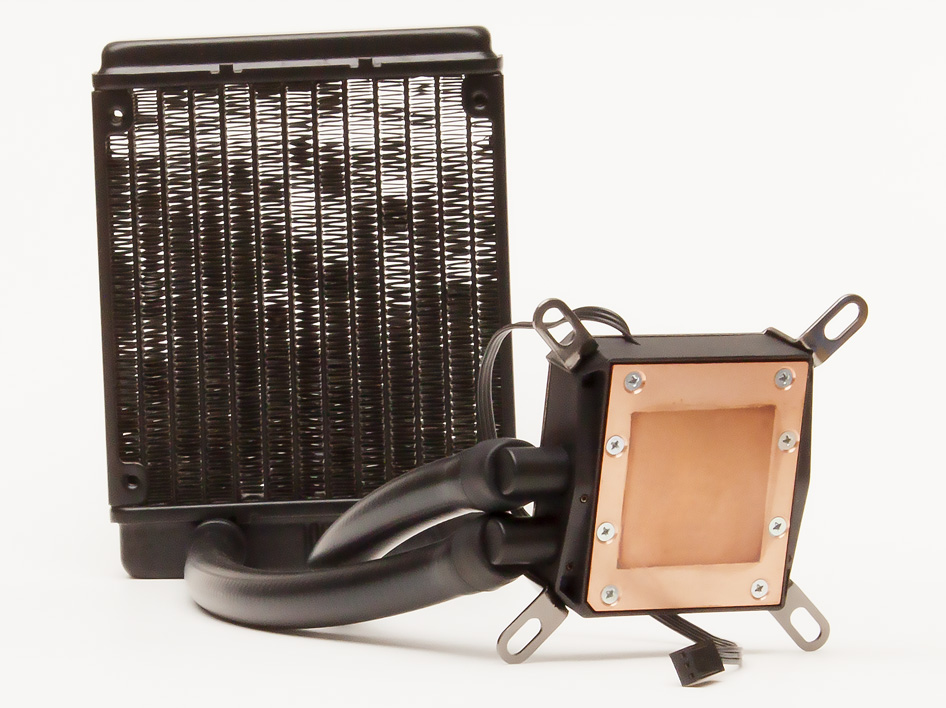
Removing the screws on the copper plate opens the fluid chamber so that all the coolant can run out. (More about that later.) After rinsing things out and letting them dry, this is what we have:
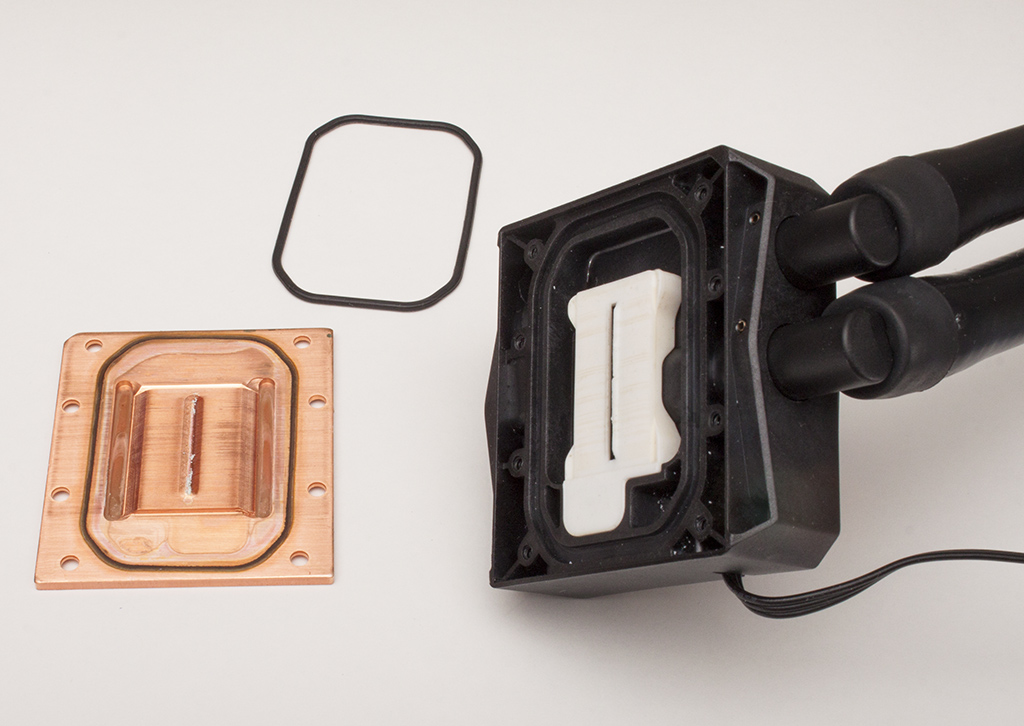
In the above picture, the black octagonal ring and the white lumpy thing are elastomeric seals. In this view, cool fluid gets pumped out the central slit in the white seal, flows from the center of the copper block toward its edges, passing through a set of finely spaced vanes milled into the copper so as to pull heat away from the processor. The hot fluid then exits through the tube near the corner of the black block, runs out through the radiator where it cools down, then comes back through the other tube to resume the cycle.
Here is a closeup of the milled vanes in the copper plate. Those white lumps in the central groove? More about that in a minute.
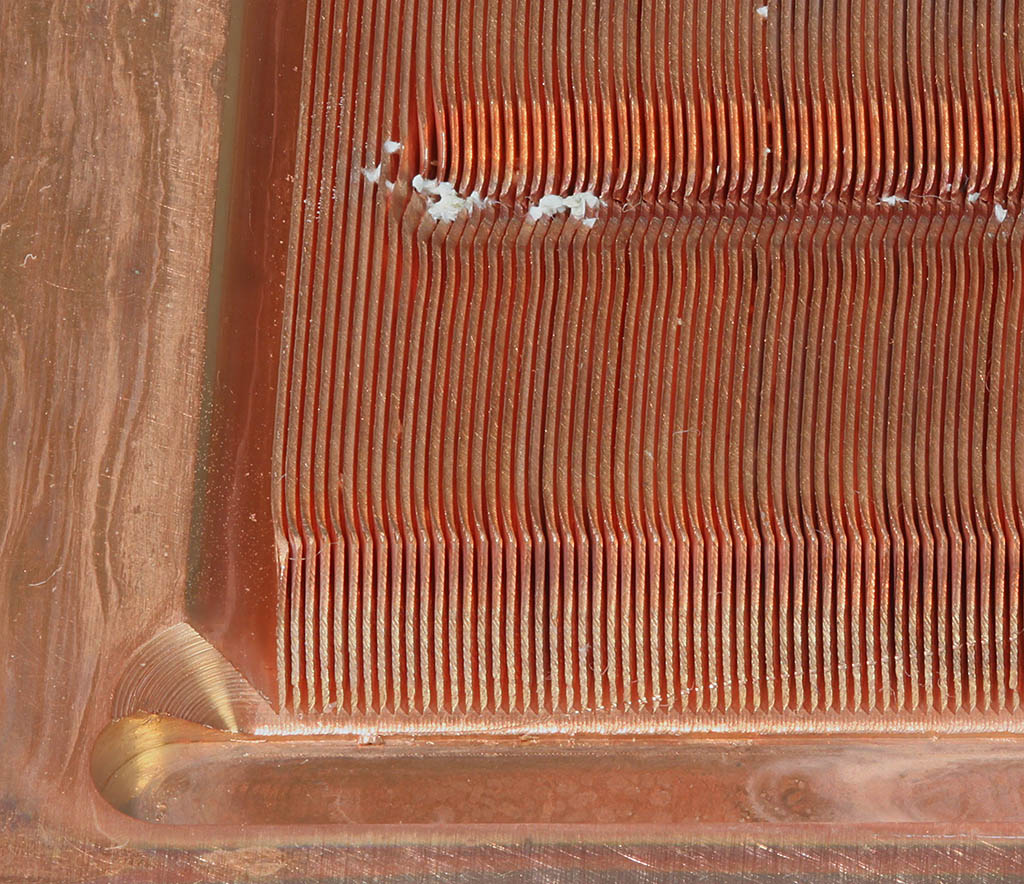
OK, turning the pump block over and disassembling it from the top side, this is what we see...
There's a 4-cornered spring clamp that holds the cooling unit tight against the processor chip.
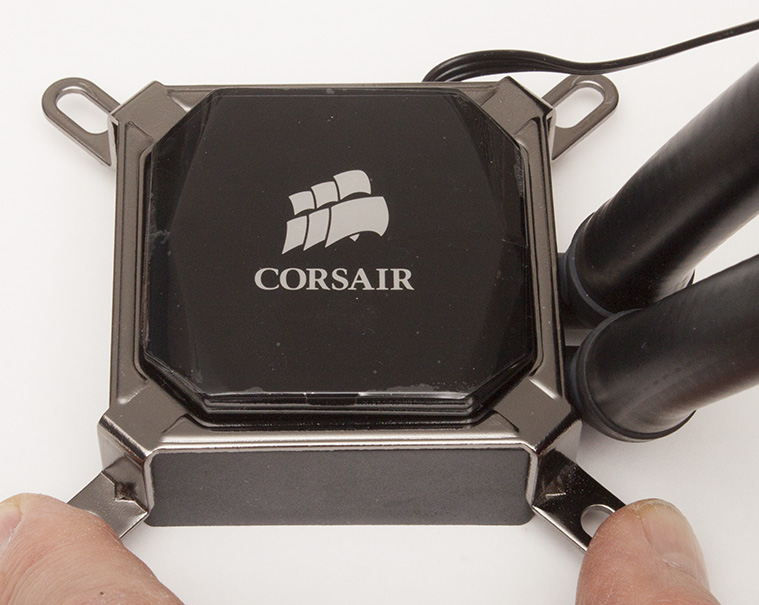
The clamp is just held on by a couple of magnets. It pulls right off to reveal two screws that hold on the pump cover.
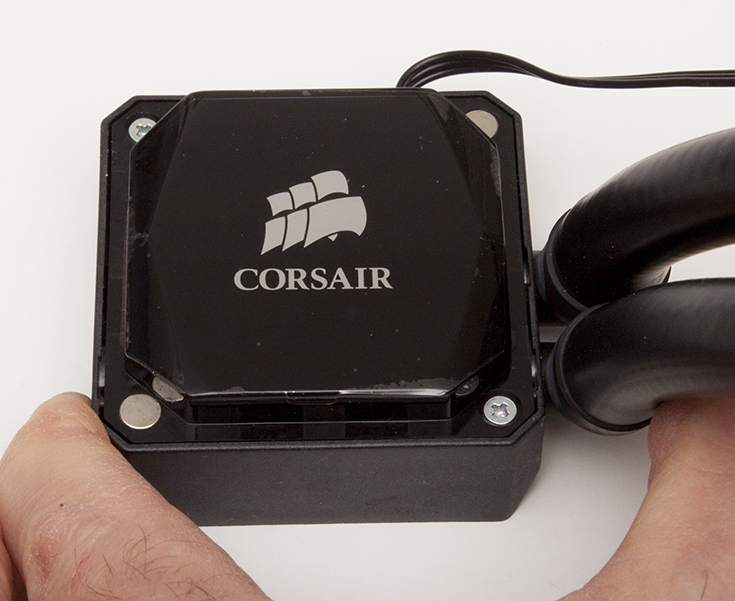
Removing the cover exposes the motor control card. What a surprise -- the main chip is number LB11961, a "Single-Phase Full-Wave Fan Motor Driver".
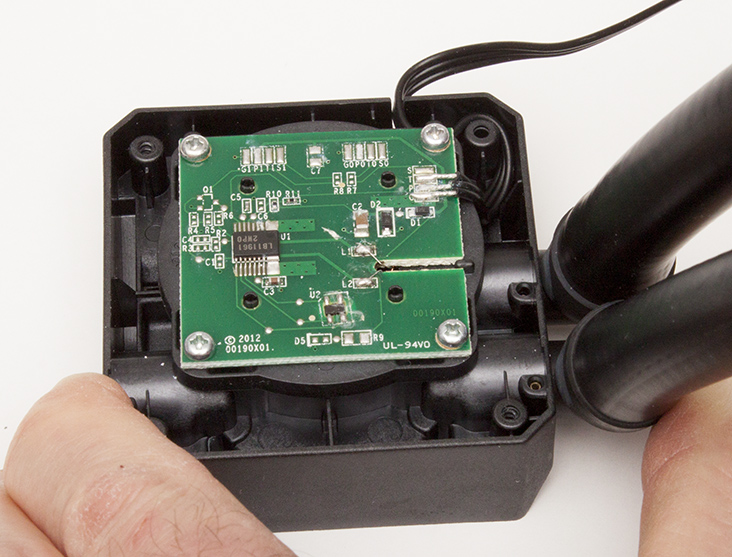
Removing the four screws frees the controller card and a plastic block on which the motor is mounted.

Removing that, and turning it over, reveals the impeller of a centrifugal pump.
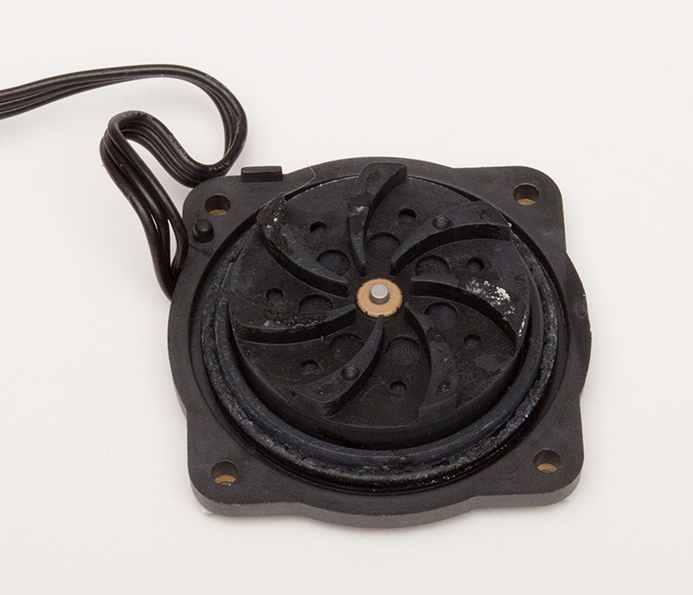
Meanwhile the pump housing now shows the route for coolant being pumped: feed into the center of the impeller and out the hole seen at top center of the photograph.
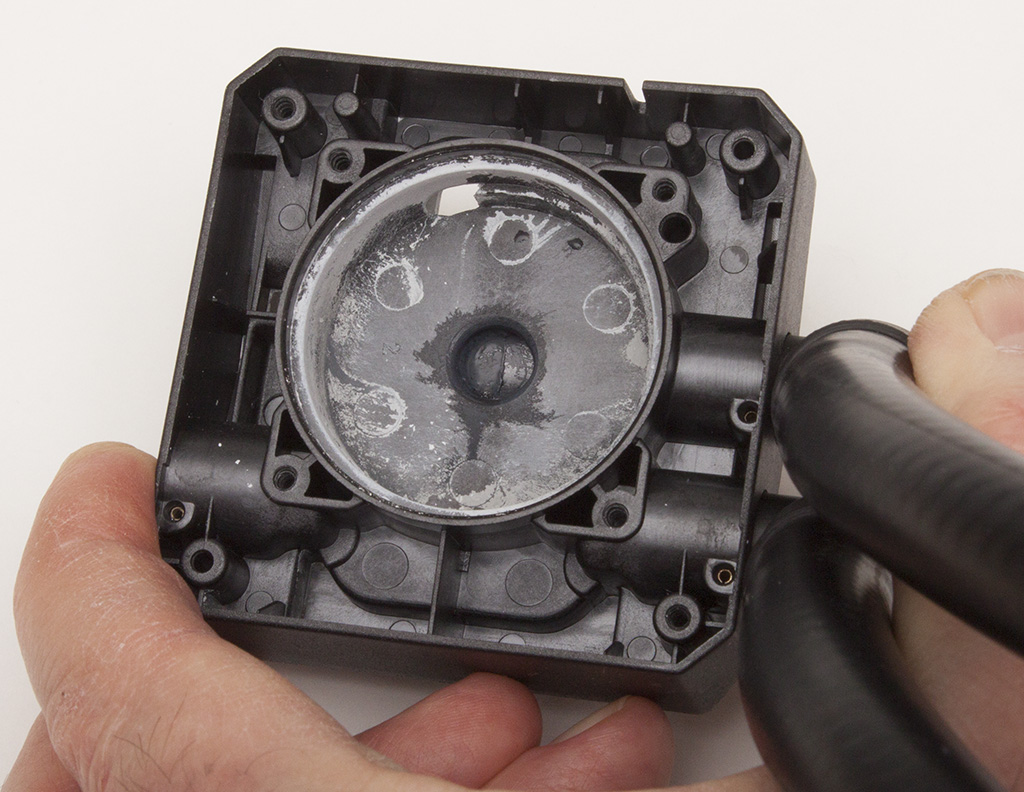
I powered up the pump and found that it still works fine.
So what was the failure??
Well, you probably remember that coolant I mentioned, the stuff that ran out as soon as I unscrewed the copper plate. The stuff looked very familiar, visually identical to what I put in my car, except for one small detail.
Here's what the stuff from the cpu cooler looks like, after it's had a chance to settle in its storage container. Ignore the lint on the outside of the container, but do notice the white layer on the bottom.
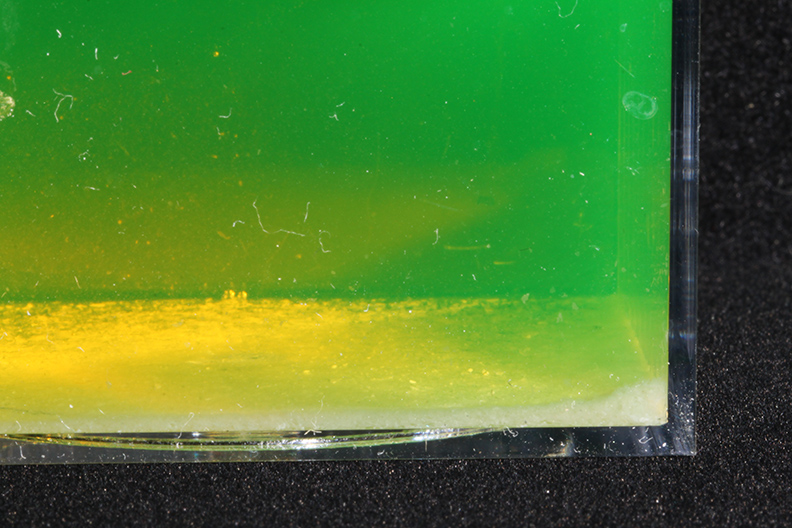
Here's what it looks like when agitated:
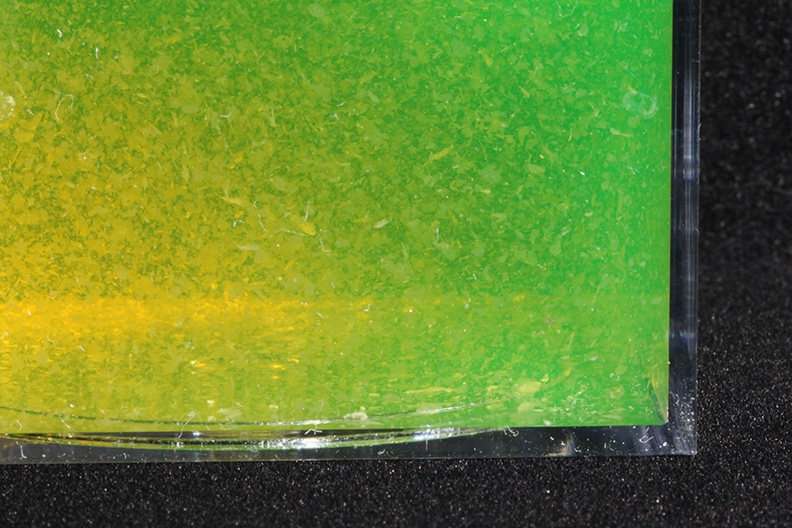
So now I'm about 99% sure that the failure was simple: the entrances to the fine cooling vanes on the copper plate just got blocked off by a nasty thick deposit of those flakes. You can see some remains of them, now dried into lumps that look a bit like salt, still sitting in the central groove of the copper plate. I'll bet that in operation (OK, non-operation), the groove was completely filled with that junk. No coolant flow, no heat transfer, no computing.
There are some high magnification images and related discussion of the coolant flakes over in the microscope forum, Circulating debris in a liquid CPU cooler, crystal mats. At first I had thought they were some sort of biofilm, based mostly on what looked like gelatinous goo when collected en masse on the wet cooling fins. But closer examination and a few simple experiments reveals that the flakes are actually collections of long very thin crystals, grown into a sort of interlocking mat that is surprisingly robust.
The cooler may develop a second life, by the way. I'm toying with the idea of using it as part of a Peltier cooled stage, to pull heat off the hot side of the Peltier module. It turns out that I can't use the built-in motor for that job, because it vibrates too much. On the other hand there seems to be no reason why I can't force fluid through the system with an external pump that would be vibration isolated from the heat exchange module. It's an idea for later, anyway.
I hope you find this interesting!
--Rik
